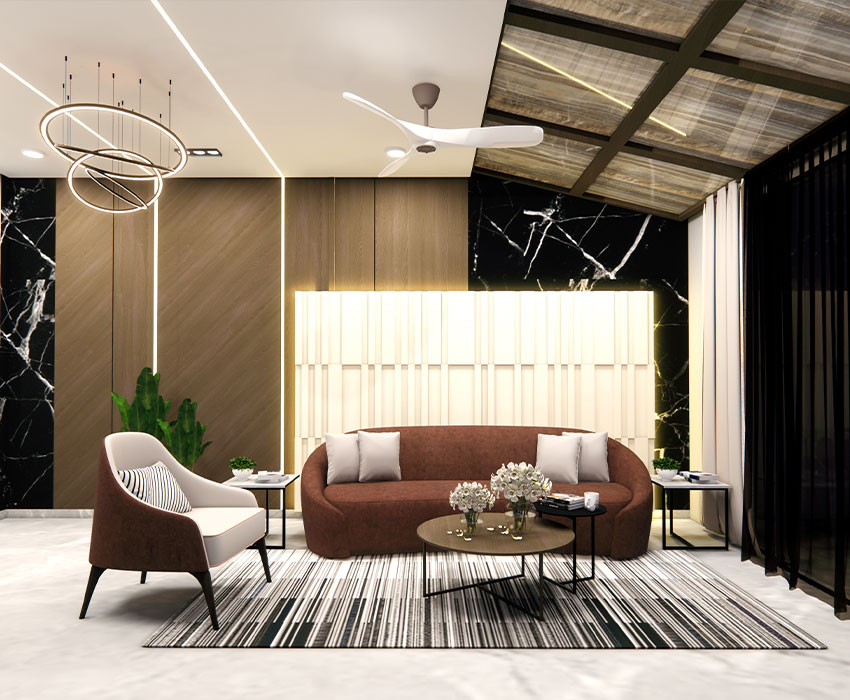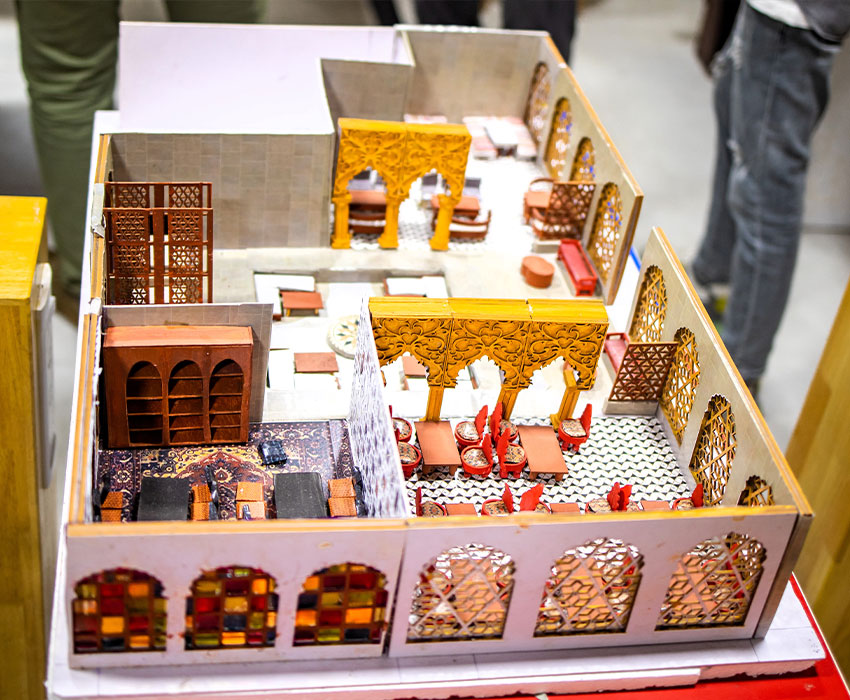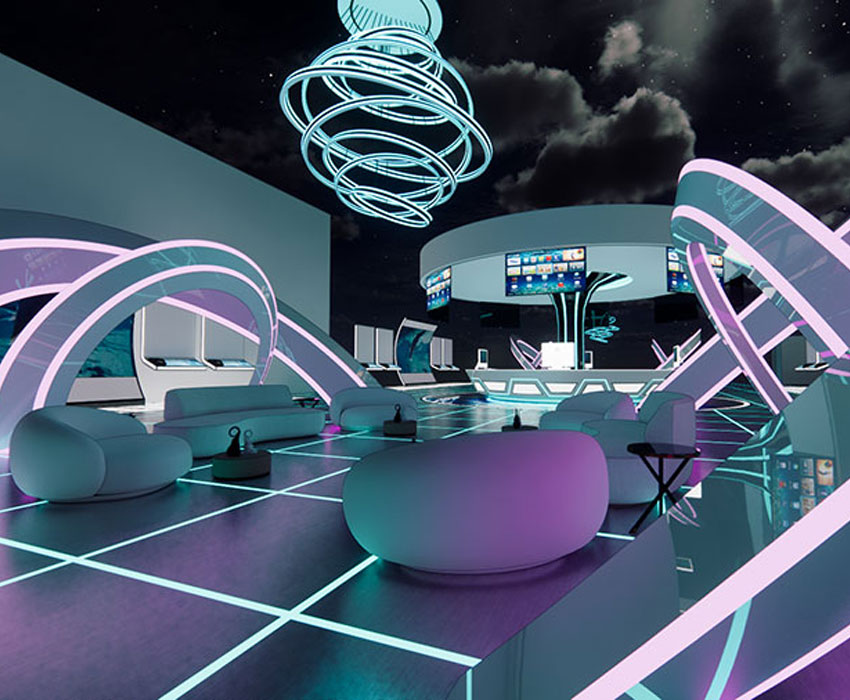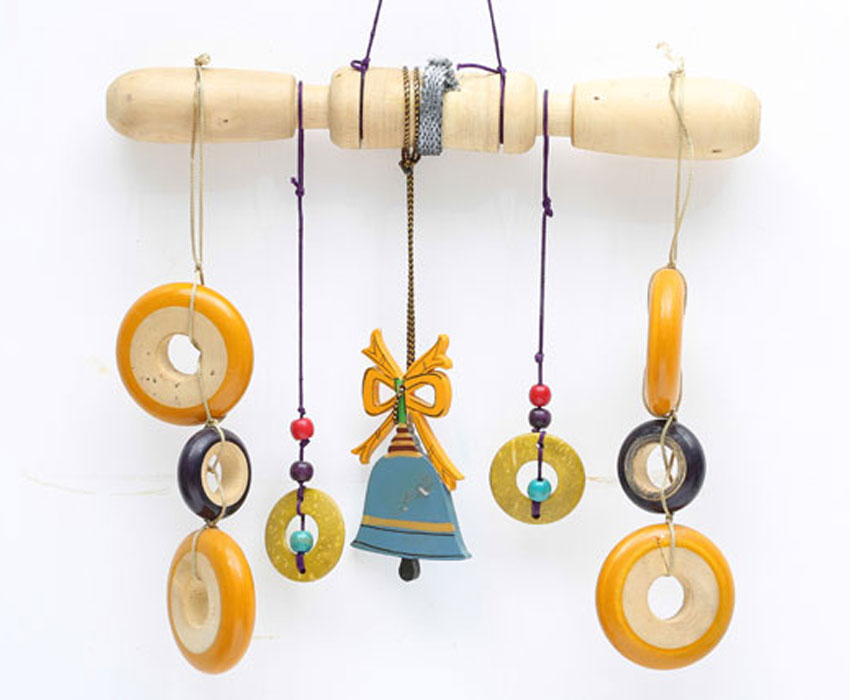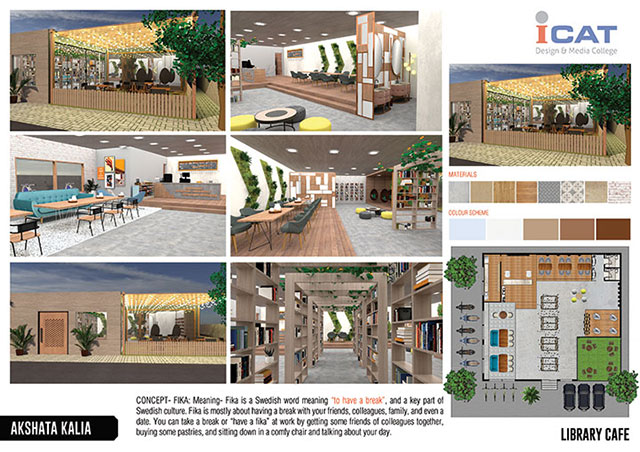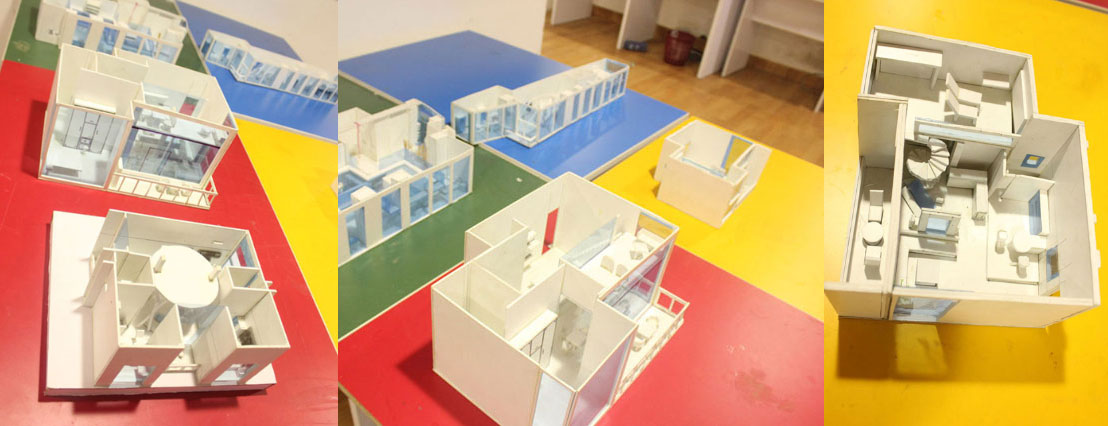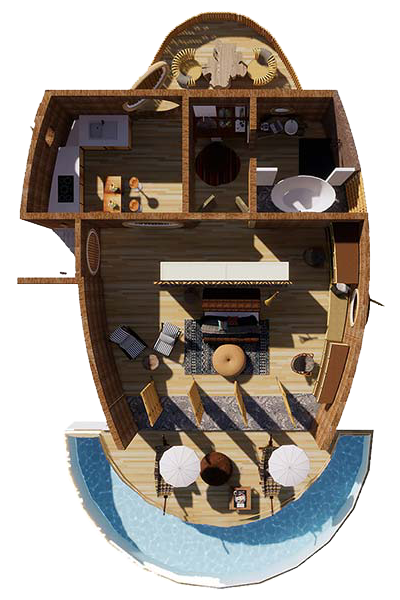
Course Overview
Roll Up for Versatile Careers
The Bachelor's Degree in Interior Design at ICAT is a full-time program that offers peerless knowledge and skills in crafting functional interior designs that improve the human quality of life.
The program ensures that students groom as a well-rounded interior design professional by providing profound understanding of everything related, right from construction materials and building plan interpretation to space planning as per usability needs, lighting techniques, furnishing, and creating digital 3D space models. The students are provided with a perfect experience that prepares them to work on designs for varied space, including residential, office, theatre, exhibition, hospital, school, and more, opening wide the opportunities for the students

Why Interior Design?
Join the In-Demand Industry
Next to Agriculture, the Real Estate industry is one of the fastest growing industries in India. Such a boom in the field of Real Estate and the growing attentiveness among people for right ambience in every place has set a rapid growth in the field of Interior Designing. This has led to a need for 100,000 Interior Designers in India, combining freelance projects as well as the jobs available in Architectural and Construction firms, and Furniture companies.
Such a huge need for Interior Design professionals also come from business houses realizing the importance of spatial design in creating the right impression with the customer and the exposure to global lifestyles. It’s now the right time for creative thinkers to pitch in this area of design, which will provide assured career, both rewarding and passionate.
Curriculum
The Learning Curve
Dear Student,Get Admission / Fees Details
* Required Fields
Skills to Build
Skills to Seek as an Interior Design Professional
-

Construction Materials
-

Sustainable Design
-

Furniture Design
-

Residential Design
-

Office Design
-

Estimation, Specification, and BOQ
-

Retail Design
-

Lighting Design
-

Research & Design
-

Software Skills
Teaching Methodology
Learning Beyond the Walls

Research Based Learning
Raising the innovators of tomorrow, the students are guided to proceed through all aspects of research process right from inception to the dissemination of the research, on every key concept in each module.
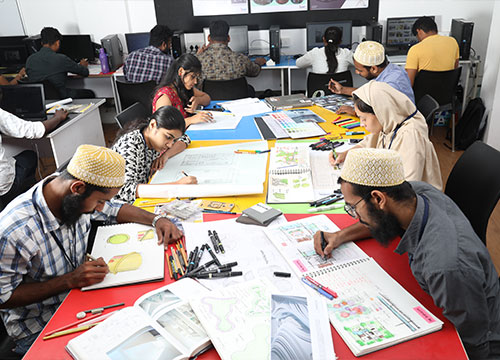
Learn as You Do
Practice-based tasks are a part of every module that gives hands-on understanding of the techniques, mediums, methodologies, and technologies pertaining to creating interior design and related products.
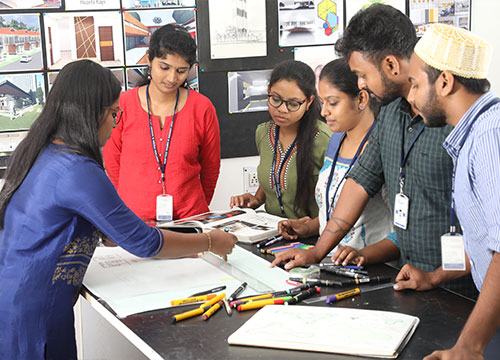
Know from the Professionals
For a perfect insight of the industry requirements, technology used, techniques followed, and more, students are presented with seminars and interactive sessions from eminent professionals in the field. The students are also taken to professional conferences, industry expos etc to gain knowledge on trending works.
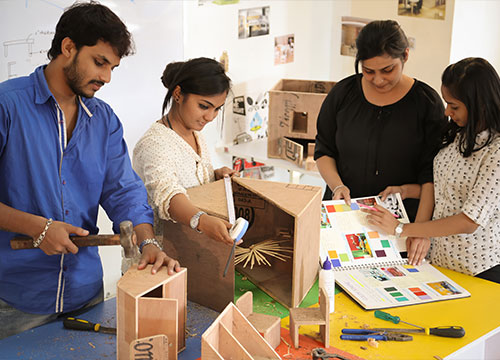
Practice the Professionals’ Way
In order to provide a cutting-edge to the young designers, they are offered with hands-on workshops from professionals on various techniques like brick laying, material application, furniture making, art installations, carpentry, clay modeling, etc.
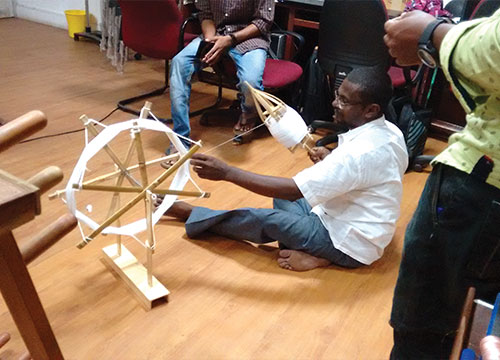
Get the Art Impulse Outdoor
Students are taken outdoors to various monuments, significant buildings, and popular landmarks, where they get to practice live sketching and understand the spatial qualities of spaces.
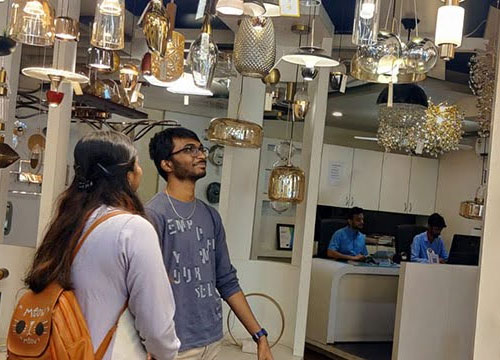
Observe from the Real Sites
Visiting live construction sites to gain knowledge gives the students the utmost exposure towards industrial realities
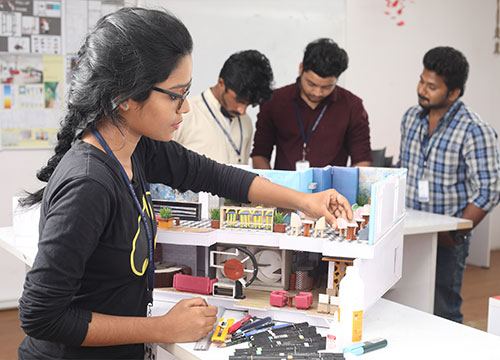
Get Your Early Professional Training
ICAT students are insisted to undergo an internship at any related organization where they will get to know the working format of an organization and gain thorough insight of the specialization they are planning for.
Student Awards
Rise and Shine

ICAT Student Won First PrizeGAFX CONFERENCE |

ICAT Alumni Wins a MillionPocket Gamer Connects |

ICAT Student Won 2nd prize - ‘Black Hole’Gamehack |

ICAT Students Won Runner-up AwardLa Fete Cultural Fest |

ICAT Student Won Runner-upIPGAF Competition |
Learning Facilities
Practical Learning

Learn by Doing – Right from the Basics
ICAT provides best-in-class facilities to set the right mood for exploration and to amplify students’ ideas in the right direction.

Give the First Shape to Ideas at Design Studio
Interior design studio serves as the place for students to probe into the core principles and skills of their chosen field of study.

Showcase the Design in a Tangible Form
The Model Making Lab at ICAT campus lets students make their miniature models of the space they have it in papers.

Show Your Visualization in 3D
Computer lab with well-configured machines housing industry-standard software and tools opens the digital space for students to give life to their ideas in 3D form.

Experience the Techniques
The exclusive workshop allows students to experience the physical tasks like carpentry, brick laying, etc.

Explore Your Drawing Skills
Access to Art studio helps students experiment their drawing skills that are important to seek a cutting edge as an Interior Designer

Be Acquainted with the Materials
A specialist Material Library for the students of Interior Design presents them with a number of different materials that are used in the field of Interior Designing.

The Knowledge Repository
Right from history of art and design to techniques with latest technology, the students have access to all interior design information through 100s of books and magazines. This helps them research beyond the classroom lectures and gain immense knowledge on the industry and current trends.

Common to All Departments
In addition to the specific facilities for each department, the campuses of ICAT College are loaded with spacious classrooms, common library with essential readings, locker facilities for students, air-conditioned halls, personal tutoring space, common working zone, students’ lounge, and so on.
Student Testimonial
Our Students Say
Career Opportunities
Get Placed as a...
With an exclusive Placement Cell that holds a record of 100% placement, till date, we assure best jobs for every student who have gathered their skills and are ready to take up challenges of the industry. As a Bachelor's Degree Interior Design graduate, students can seek an opportunity as:
 Residential Interior Designer
Residential Interior Designer Business Interior Designer
Business Interior Designer Furniture Designer
Furniture Designer Exhibition Designer
Exhibition Designer Lighting Designer
Lighting Designer Kitchen Designer
Kitchen Designer Interior Design Consultant
Interior Design Consultant Office Space Planner
Office Space Planner
 Interior Product Designer
Interior Product Designer Retail Designer
Retail Designer Furnishing & Color Consultant
Furnishing & Color Consultant Built Environment Consultant
Built Environment Consultant Interior Lighting Consultant
Interior Lighting Consultant Project Manager
Project Manager Set Designer
Set Designer
Why Choose ICAT
Only at ICAT
The focus the program gives towards futuristic technologies and the global knowledge that veterans in our knowledge brigade brings help students stand apart as best in the industry.
Above these, the opportunity to work on Dissertations, create Portfolio, and take up Internship with renowned companies gives the sheer confidence and a cutting edge as an animation professional.
 100% placement
100% placement world-class curriculum
world-class curriculum Degree certified by eminent university
Degree certified by eminent university Highly equipped labs
Highly equipped labs frequent sessions from industry professionals
frequent sessions from industry professionals showcase events give the best learning experience
showcase events give the best learning experience
Top Recruiters
We Collaborate with 500+ Leading companies

Application Process
Become an ICATian
Step 1 : Fill the application form
Apply by Filling Application form.
Step 2 : Interview Process
Go through a direct communication with the Admission Team
Step 3 : Join ICAT
An offer letter will be send. Secure your seat by paying the admission fee.
International Professionals
Learn from the Veterans’ Perspective
The curriculum and teaching strategies at ICAT is never an instant thought. They are all an outcome of research and brainstorming of ideas from renowned professionals in the field. The knowledge brigade that guides us through the curriculum delivery of Bachelor's Degree Interior Design includes:
| Name | Designation |
|---|---|
| Prof. JAKKIE DEHNN | Internationally-acclaimed expert on Sustainable Materials; Retired University's Reader in Sustainable Product Design, Kingston University, UK |
| Prof. RICHARD SNELL | Furniture Designer and Teacher at Birmingham City University, UK |
| Dr. PANCH SUNTHARALINGAM | Course Director, MA Design Visualisation, Birmingham City University, UK |
| Prof. RICHARD JONES | Senior Lecturer of Interior Design, Birmingham City University, UK |
| Prof. SOLOMON VEDAMUTHU | |
| Ar. BENNY KURIAKOSE | Principal Architect at Benny Kuriakose Architects - Vernacular Art and Architecture |
| Ar. CHETAN K S | Principal Designer & Mentor, Kham Designs - Biomimicry (Sustainability) |
| Ar. DHRUV FUTNANI | Managing Director at Green - Green Building Techniques |
| V. SRINIVASA RAGHAVAN | Glass Sculptor - DakshinChitra |
| MARLENE LITTLE | Birmingham City University, UK |
| JACKIE | Birmingham City University, UK |
| Ar. NAGARAJ S | Principal Architect - Artiature |
| Ar. ANOOP MENON | Principal Architect - AM Studio |
| Mr. SALAMAN | Principal Artist - Fine Art |
| AR. YUVARANI | Junior Architect - Murali Architects |
| AR. SANKEERANI SRINIVASAN | Associate Professor - SEED |
| Ar. THARIKA | Assistant Professor, Mohamed Sathak A.J. Academy of Architecture |
| Ar. SRANYA NS | Principal Architect - Artiature |
| Ar. VIVEK | Assistant Professor, Mohamed Sathak A.J. Academy of Architecture |
| AR. JENITA | Assistant Professor, Mohamed Sathak A.J. Academy of Architecture |
| Ar. MALAVIKA | Assistant Professor, Mohamed Sathak A.J. Academy of Architecture |
Campus Location
Study at Any of Our 3 State-of-the-Art Campuses
-
Chennai
153, Santhome High Road, Mylapore, Chennai - 600 004.
044 - 4293 4293, +91 - 95001 28555

-
Bangalore
424, Bommanahalli, Hosur Main Road, Bangalore - 560 068.
080 - 4110 7755, +91 - 96111 73607

-
Hyderabad
H.NO.3-1-30, S.Y.No:34/2 and 35, Bahadurguda, Saroornagar, L.B.Nagar, R.R.District, Hyderabad - 500 074
040 - 2447 7755, +91 - 75694 34552

FAQ
Still need anything to know?
This is the first item's accordion body. It is shown by default, until the collapse plugin adds the appropriate classes that we use to style each element. These classes control the overall appearance, as well as the showing and hiding via CSS transitions. You can modify any of this with custom CSS or overriding our default variables. It's also worth noting that just about any HTML can go within the .accordion-body, though the transition does limit overflow.
This is the second item's accordion body. It is hidden by default, until the collapse plugin adds the appropriate classes that we use to style each element. These classes control the overall appearance, as well as the showing and hiding via CSS transitions. You can modify any of this with custom CSS or overriding our default variables. It's also worth noting that just about any HTML can go within the .accordion-body, though the transition does limit overflow.
This is the third item's accordion body. It is hidden by default, until the collapse plugin adds the appropriate classes that we use to style each element. These classes control the overall appearance, as well as the showing and hiding via CSS transitions. You can modify any of this with custom CSS or overriding our default variables. It's also worth noting that just about any HTML can go within the .accordion-body, though the transition does limit overflow.

Admissions Enquiry
95001 28555





